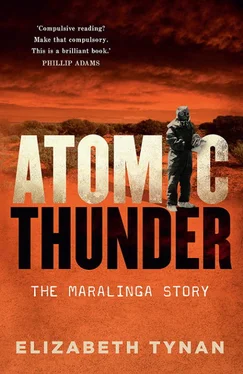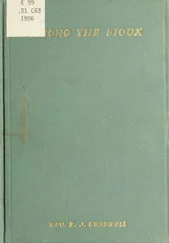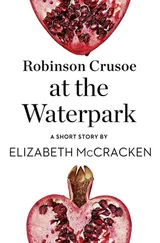The arrest of Alan Nunn May confirmed American suspicions that the British were not to be trusted in the secret development of nuclear weapons. This, no doubt, was only worsened by the revelations that Nunn May had been investigated and cleared by MI5, the British security service. The Americans were, and remain, skittish regarding security issues. They didn’t need much encouragement to form the view that other nations were lax in their security. They felt the same way about the Australians.
At the end of World War II, Britain was severely depleted in every way: emotionally, physically, militarily, socially and economically. The country had used all its resources fighting a desperate campaign against Nazi Germany. Rationing stayed in place well into the 1950s. Britain was broke. Yet she chose to go down the atomic weaponry path, to create a hugely expensive nuclear arsenal. Despite the Hyde Park Agreement, the McMahon Act forced Britain to do this without the valuable assistance of the US. Inevitably, this decision to become a nuclear power diverted economic resources away from postwar reconstruction and from a civilian population desperate for relief from the austerity of the war years. This was a significant choice.
The decision to become nuclear armed was not welcomed by all in the UK. One of the major critics was the chief scientific adviser to the Ministry of Defence Sir Henry Tizard, who famously said in 1949, after planning for the British bomb had begun:
We persist in regarding ourselves as a Great Power, capable of everything and only temporarily handicapped by economic difficulties. We are not a great power and never will be again. We are a great nation, but if we continue to behave like a Great Power we shall soon cease to be a great nation. Let us take warning from the fate of the Great Powers of the past and not burst ourselves with pride.
Tizard, a chemistry researcher by training, had been involved with the Tube Alloys Directorate and was well versed in what was required to develop nuclear weaponry. Indeed, Tizard was among those who set up the Maud Committee. His view was not ill informed; he well understood what nuclear weaponry would cost the nation.
Nevertheless, Britain made a massive commitment at a time of great austerity. The secret decisions to build a nuclear arsenal were accompanied by related decisions to pursue nuclear energy; the two were intertwined. The country set up three new installations for the task: the Atomic Energy Research Establishment (AERE) at Harwell, near Oxford, which housed laboratories for research into both military and civilian uses of nuclear energy; the Windscale facility (later renamed Sellafield) in Cumbria, to manufacture the required radioactive material, including plutonium; and a research and development organisation that came to be called the Atomic Weapons Research Establishment at Aldermaston, to build the bombs and oversee weapons testing.
The eminent physicist John (later Sir John) Cockcroft headed the research establishment at Harwell. Cockcroft was already well known in the world of science. In 1932 with Ernest Watson he had split an atom by artificial means for the first time, an achievement marked by a Nobel Prize in 1951. The pair split the nuclei of lithium atoms using a beam of protons, demonstrating that nuclear fission was possible. During 1940 and 1941 Cockcroft had been a member of the Maud Committee that had proved the feasibility of an atomic bomb, and at the end of 1943 he had taken over as director of the Anglo–Canadian–French atomic team at Montreal. The translation of scientific research into practical engineering projects was a feature of Cockcroft’s period as director of the Canadian project. Ernest Titterton went to work with Cockroft at Harwell after the war, as part of a physics research group, where he carried out fundamental studies of nuclear fission reactions. Titterton also acted as a consultant to the AWRE and established important contacts there. During this time Titterton published 28 papers. Then he packed his bags and headed to Australia in the early 1950s to begin an even more prominent phase of his career.
The task of overseeing the creation of postwar plutonium fell to the brilliant engineer Christopher Hinton, who was responsible for the design, construction and operation of plants to produce fissile material. He created the plutonium at Windscale for the British bombs. William Penney was appointed to head up the atomic weaponry research and development effort. Before his work on the Manhattan Project, Penney was a veteran of the Tube Alloys Directorate. According to Margaret Gowing, ‘In 1946, as Cockcroft, Penney and Hinton took up their posts, it seemed that the special qualities and past experience of all three had combined to produce a very rare situation: the right men all arriving in the right jobs at the right moment’.
As Britain saw the pivot of world power shift towards the US, where the doomsday weapon had been made real, its leaders had a decision to make. Would Britain cede technological supremacy to the US (and, all too soon, the USSR), or would it match the rising superpowers bomb for bomb? The answer was not long in coming, although the public did not know it for some time. The British Government made its first step on the path to its own ‘nuclear deterrent’ in August 1945, shortly after the full extent of the unleashed atom was felt around the world. On 29 August, a circle of six UK government ministers who met in secret and called themselves GEN.75 started to consider a nuclear future (this was standard nomenclature for Cabinet committees, which were prefaced either GEN or MISC). Among other things, GEN.75 led directly to the formation of the Advisory Committee on Atomic Energy. The committee was the successor of the wartime Tube Alloys Consultative Council, a group of ministers and scientists who had advised the government on issues relating to the work being done by the Tube Alloys Directorate. Tube Alloys lived on under a new name.
Realism and idealism competed at this time in British nuclear planning. As scholar Susanna Schrafstetter put it, ‘Britain was assembling a military nuclear programme while, at the same time, politicians were drafting lofty schemes to avoid nuclear war’. They wanted to head off a nuclear arms race and even considered sharing nuclear secrets with the USSR. But the reality of postwar geopolitics, and a desire to halt the country’s international decline into irrelevance, focused minds instead on the challenging problem of how to simultaneously join the race and decry it.
The official decision to create a British bomb was taken in January 1947. An earlier passionate discussion within the tight circle of GEN.75 on 25 October 1946 that had essentially, though informally, set it on this fateful path could have gone either way. Foreign Minister Ernest Bevin arrived late to find fellow committee members about to decide against a British bomb and tipped the discussion in the opposite direction. By the end of the meeting, fired up by Bevin’s rhetoric, they were all agreed. Britain would build its own bomb. In a foretaste of decisions about testing the bomb in Australia, the six GEN.75 ministers did not take the matter to Cabinet for discussion. Clement Attlee, the postwar prime minister, set up the short-lived GEN.163 committee on 8 January 1947 with the specific, though secret, task of building a British A-bomb. At a planning meeting held in June 1947 in the library at the Woolwich Arsenal, the practical matters associated with building Blue Danube, the first operational British nuclear bomb, began.
A grim atomic era calculus led the UK to determine that containing the USSR would require 1000 British nuclear weapons, a huge undertaking. The more enthusiastic among the backers of the British bomb believed it was possible. But building the British bomb was not a fast process. The committee drew on the expertise developed through the Maud Committee and Tube Alloys, and on the knowledge brought back to the country from the Manhattan Project. Ernest Bevin was particularly adamant that the snub by the Americans would not leave Britain out in the cold
Читать дальше












